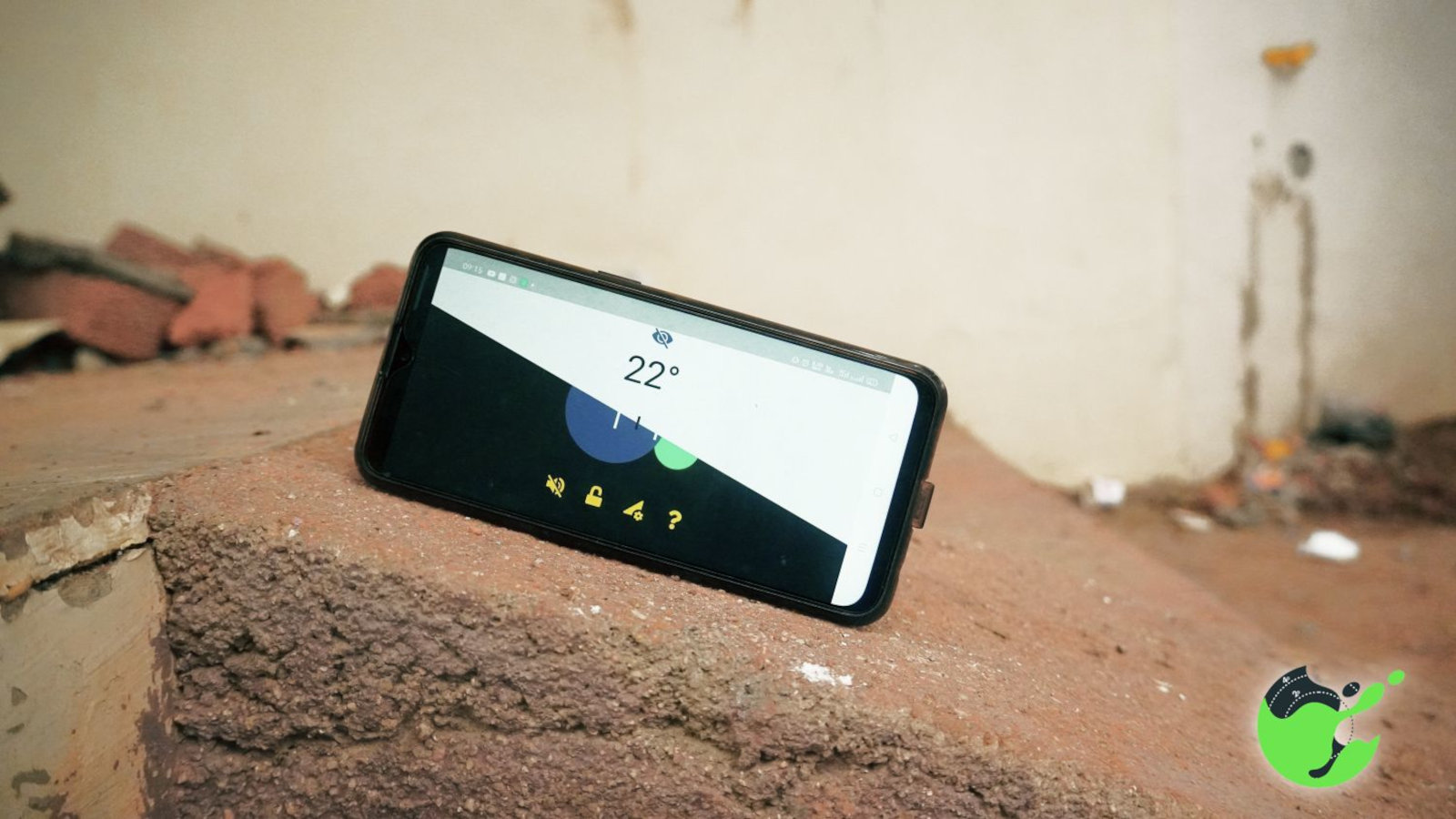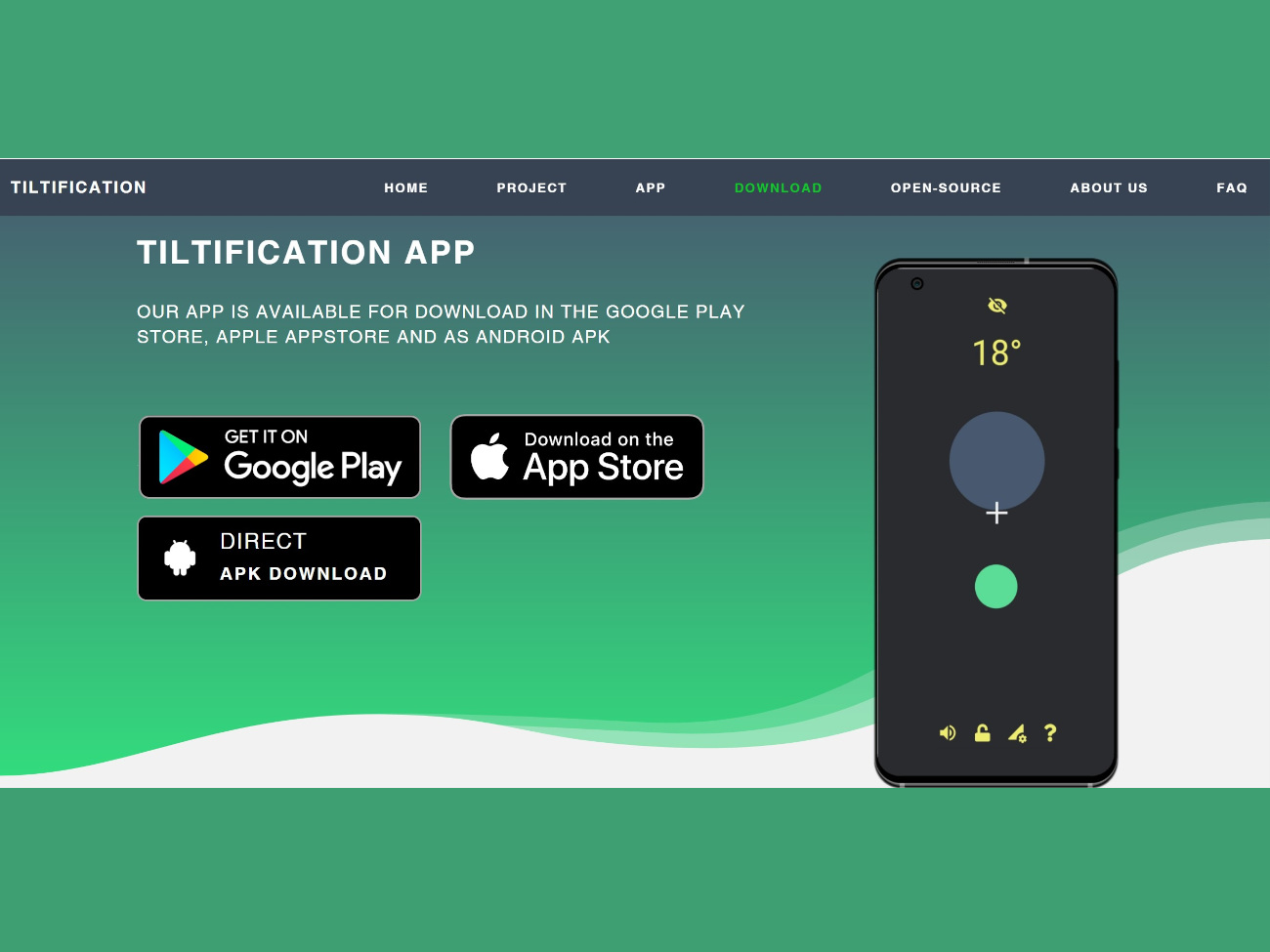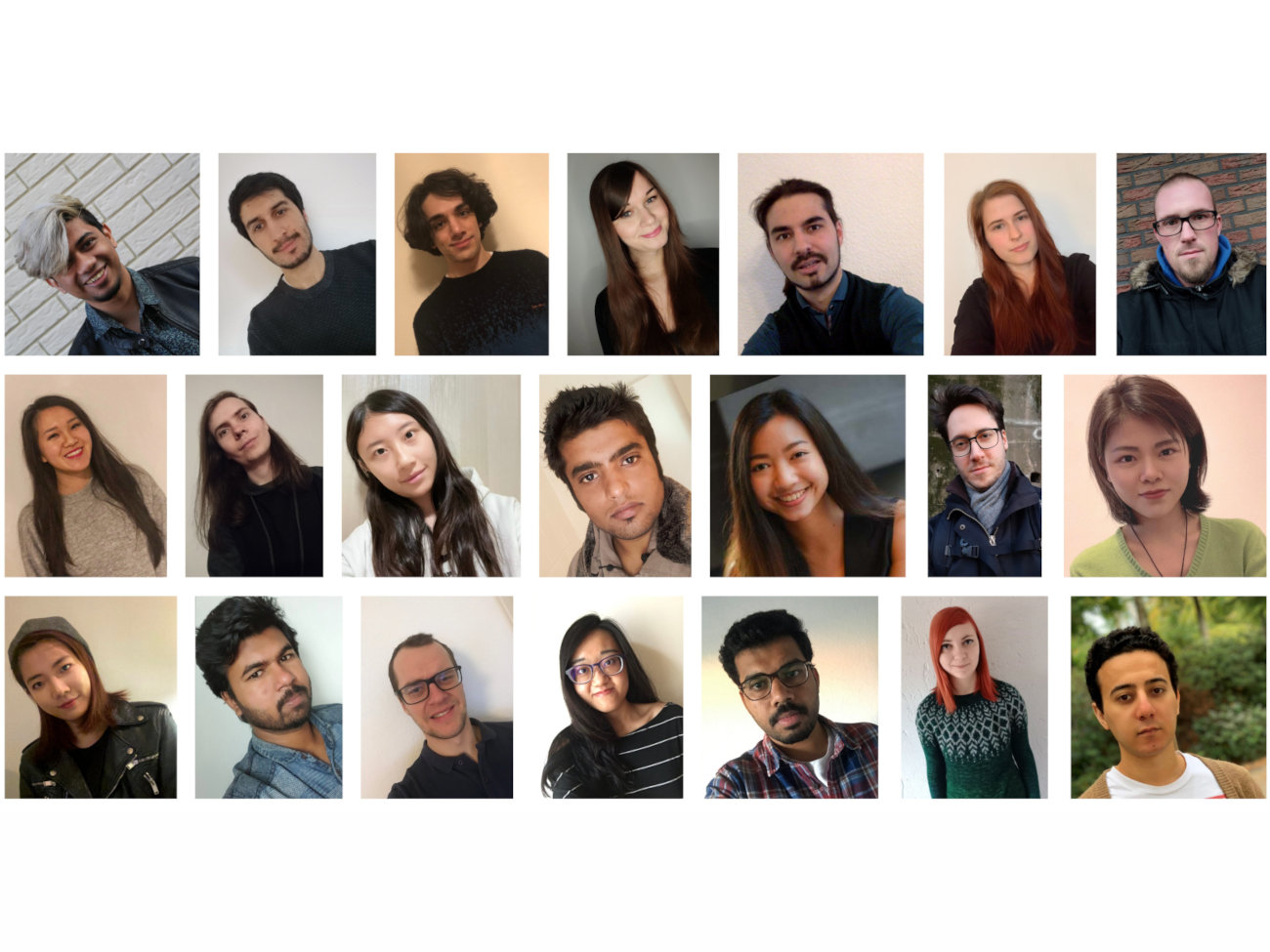
© Varun Raval / Universität Bremen
20,000 Downloads: The Successful "Tiltification” App
A great example of how research-based learning works at the University of Bremen: the smartphone app "Tiltification."
The spirit level for cell phones with acoustic support has been downloaded more than 20,000 times in just a few months. The project team and its leader are very pleased and proud.
Dr. Tim Ziemer is thrilled: “This is huge. An avalanche has started rolling. With these download numbers, we’re light years ahead of other apps from the University of Bremen.” The music scholar from the Bremen Spatial Cognition Center (BSCC) spent a semester supervising 20 students in a project for the master’s degree programs in computer science and digital media. The task was to develop a smartphone app suitable for everyday use based on “psychoacoustic sonification.”
The result was “Tiltification”: application-oriented, suitable for everyday use, helpful. A completely different spirit level app – with the help of sounds it is possible to correctly align pictures, tables, shelves, or simply a camera shot. There is no longer a need to look at the display – even though there is still a visual element available. Tim Ziemer: “One craftsman has already enthusiastically reported back that he finally no longer needs his boss to keep an eye on the spirit level. He can now align the work materials on his own.”
Hearing Correct Alignment
But what actually is psychoacoustic sonification? The term refers to the representation of data through sounds. “Spirit level apps for smartphones are plentiful,” Ziemer says. “But with our app, you don’t necessarily have to look at the display to know when something is ‘in balance.’ You just hear it!”
The smartphone app is available for both Android and iOS systems. It uses the sensors built into virtually every device. For example, a table can be levelled horizontally simply by placing the device on it. You then see something on the display - just like you’re used to from “traditional” spirit level apps. “The highlight of Tiltification is that the app additionally communicates the two angles of the cell phone acoustically – this is much more accurate than the classic spirit level,” explains Ziemer.

© Projekt Tiltification / Universität Bremen
When used as described, the app informs the user in which direction and how far the cell phone must be tilted in order to align it horizontally. This is not done by means of speech: “By the time the app would be able to have pronounced the angle, it may have long since changed again. Instead, we use psychoacoustic sonification.”
Surgeons to Benefit from the Technology in the Future
Some may be familiar with a simple form of this technology from a car’s acoustic parking assistant: depending on the sound, one learns how far the car is from the next obstacle. Psychoacoustic sonification is Tim Ziemer’s current research topic. “Sound can carry significantly more information. In the future, it should also safely navigate surgeons through minimally invasive operations, for example.”
The 20 students of computer science and digital media came into contact with psychoacoustic sonification for the first time in the master’s project at the University of Bremen. Their task was to explain and make this abstract technology accessible to laypeople in an understandable way. “Strictly speaking, psychoacoustic sonification communicates nothing more than a three-dimensional coordinate. The resolution is hundreds of data points per spatial dimension at dozens of time points per second,” says expert Ziemer.

© Projekt Tiltification / Universität Bremen
How can one imagine this technology and how can it be made useful for everyone - that’s what the 20 students asked themselves during the very intensive semester. “Normally, such master’s projects run over two semesters with 20 hours per week. Here we had a ‘full time job’: the students worked 40 hours a week on it, so they got a realistic ‘job feeling’.”
Due to the Corona restrictions, the team did not meet physically at all and ideas were exclusively exchanged online. “This was a challenge for learning and in terms of creating a sense of community, but for programmers, online collaboration already became firmly established more than a decade ago anyway. As our project is ‘open source,’ not just us, but everyone around the globe can further develop Tiltification.”
“A Modern Form of Science Communication”
In any case, the result is impressive and that explains its success. “The students conceived, implemented, and designed this app and diligently carried out social media marketing,” says Ziemer, pleased with the all-around successful result. “Tiltification is a modern form of science communication. Multimedia has long been an integral part of knowledge transfer but through an interactive app, people can not only passively take note of technologies, but try them out independently and thus learn to understand them.” The large app stores ensure worldwide availability and easy installation.
At the same time, the music scholar warns against the initial shock, as the sound is rather unusual. Nevertheless, users learn to interpret the sound in just a few minutes and as soon as they can “read it by listening” like any other digital display, the startling noise perceived by them turns into an informative one: “One just has to let it happen and not close their ears to it.”
Tiltification not only equips users with a new technology - the app also makes them aware of how precisely the human ear can analyze sounds and, in turn, how informative sound can be. Tim Ziemer: “Those who get the hang of it can help us optimize the sound by playing the CURAT Sonification Game.”
You can find further information and the apps here:
Website of the App “Tiltification”